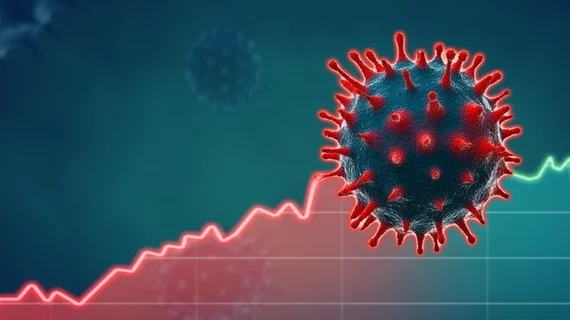Imaging volume trends offer key clues as providers prioritize resources amid COVID-19 disruptions
Pediatric imaging volume trends offer some key clues as providers prioritize resources amid ongoing COVID-19 disruptions, according to research published Monday in Academic Radiology.
Experts with Massachusetts General Hospital analyzed data from more than 15,000 exams delivered at the Boston-based institution before and during the pandemic. They noted drop-offs in the use of fluoroscopy and X-rays after the coronavirus arrived, suggesting an opportunity to redeploy radiographers to other high-priority areas.
Meanwhile, demand for radiology services requiring anesthesia increased, signaling the importance of preserving such appointment times when facing future disruptions.
“This [study] strengthens the need to apply clinical decision support tools for appropriateness of exam ordering and selection during a future resource-limited setting or even during nonemergent situations as a resource-conservation strategy,” corresponding author Michael Gee, MD, PhD, Mass General’s chief of pediatric radiology, and co-authors concluded. “Although our study was focused on changes in pediatric radiology practice during the COVID-19 pandemic, our approach and findings may be extrapolatable to the daily radiology practice.”
To reach their conclusions, Gee et al. retrospectively searched their organization’s electronic health record, focusing on the period from September 2019 through May 2020. They used March 15 as the dividing line between before and after the pandemic started. Altogether, the baseline period included nearly 14,000 imaging exams, with an average patient age of 10, while the COVID-19 timeframe had 1,000 more (mean age of 9).
The investigation uncovered statistically significant reductions in the proportion of adolescent imaging exams, falling from 53% down to 46% during the pandemic. Same for radiography, dropping from 70% to 62%, and nontraumatic pain indications (46% vs. 39%). On the other side, Mass General recorded higher proportions of imaging exams for neonates, infants and early childhood patients amid COVID-19. CT, ultrasound, oncologic indications, congenital/developmental disorders, and studies performed using anesthesia also all saw upticks.
Imaging exams of neonatal patients, and those involving MRI, had higher odds of being completed during the pandemic compared to lower odds for fluoroscopy.
“We hypothesize this could be due to: (a) the overall decrease in ordered exam volume enriching for cases with important clinical questions requiring advanced imaging like MRI,” the authors wrote. “And (b) there is a high baseline clinical threshold for referring providers to order imaging exams under anesthesia, such that the clinical question cannot be answered by other means. Consequently, we consider anesthesia/sedation imaging exams to be highly prioritized studies even during the COVID-19 pandemic.”
Read more of their findings in Academic Radiology here.

